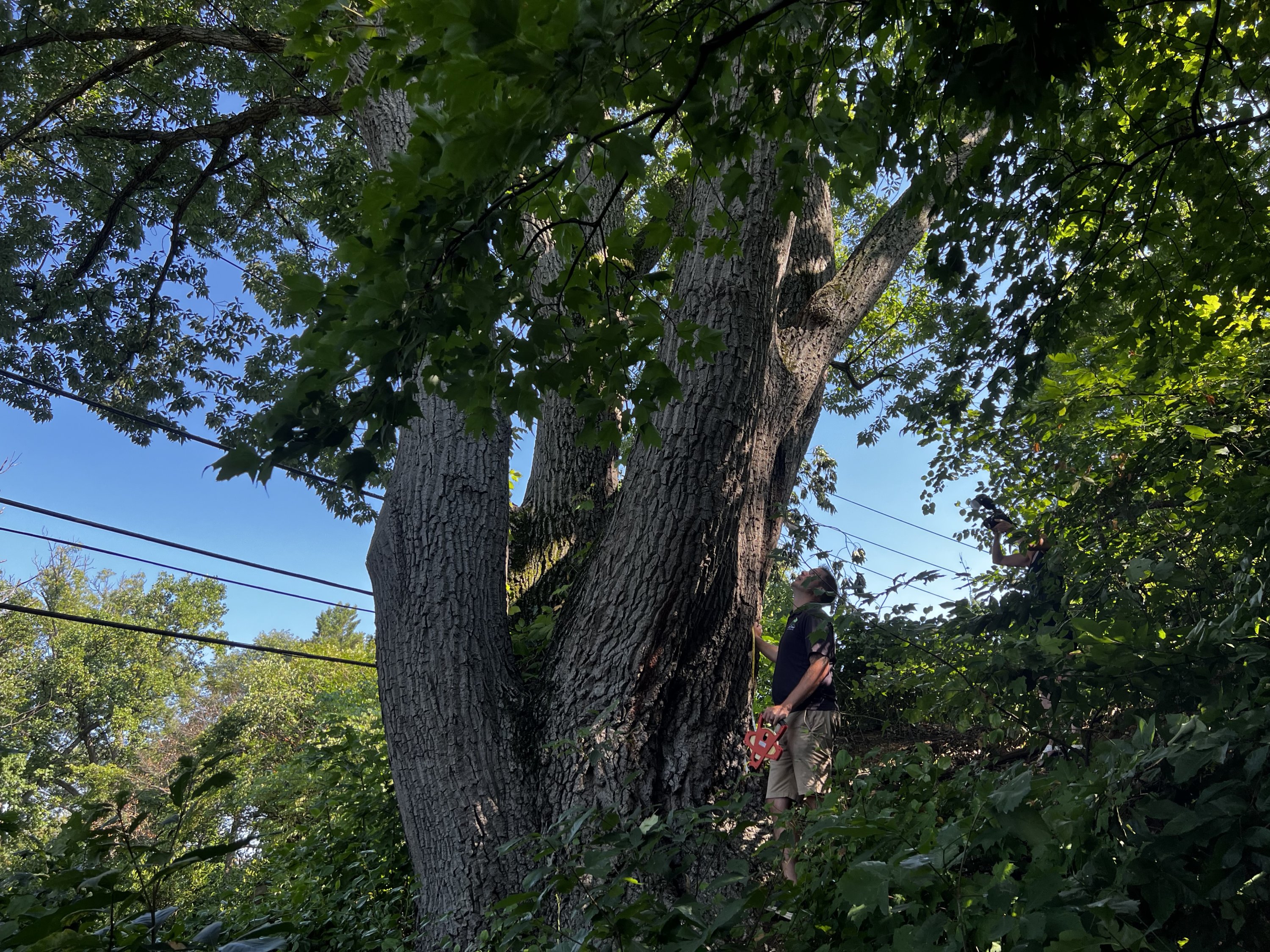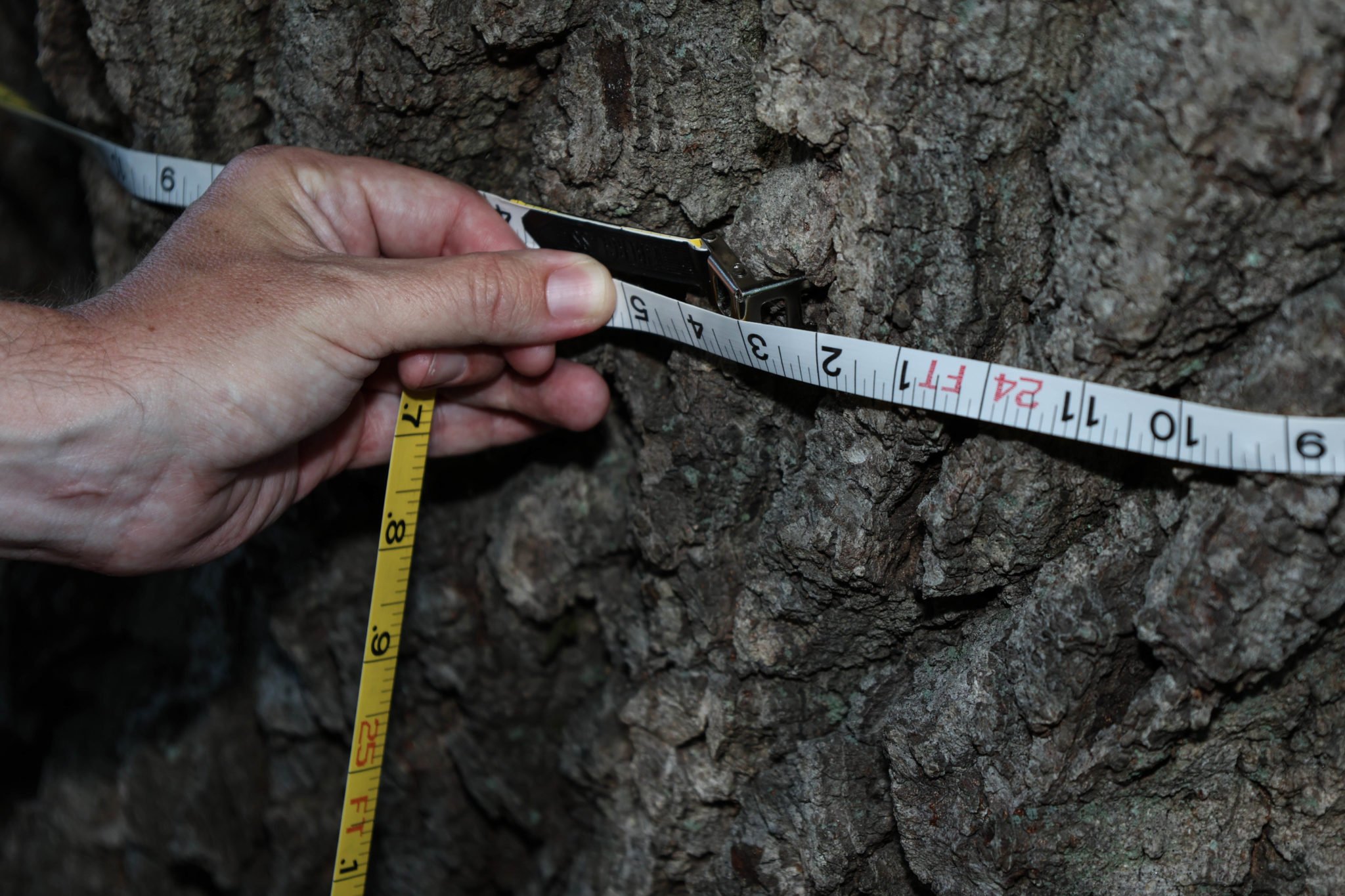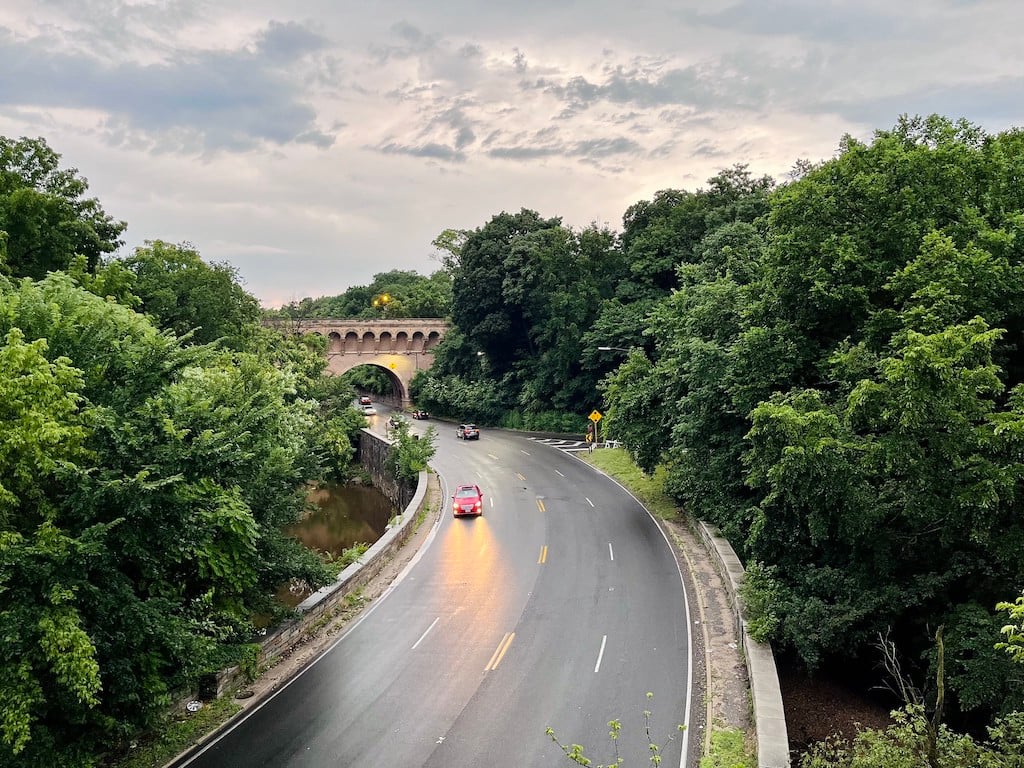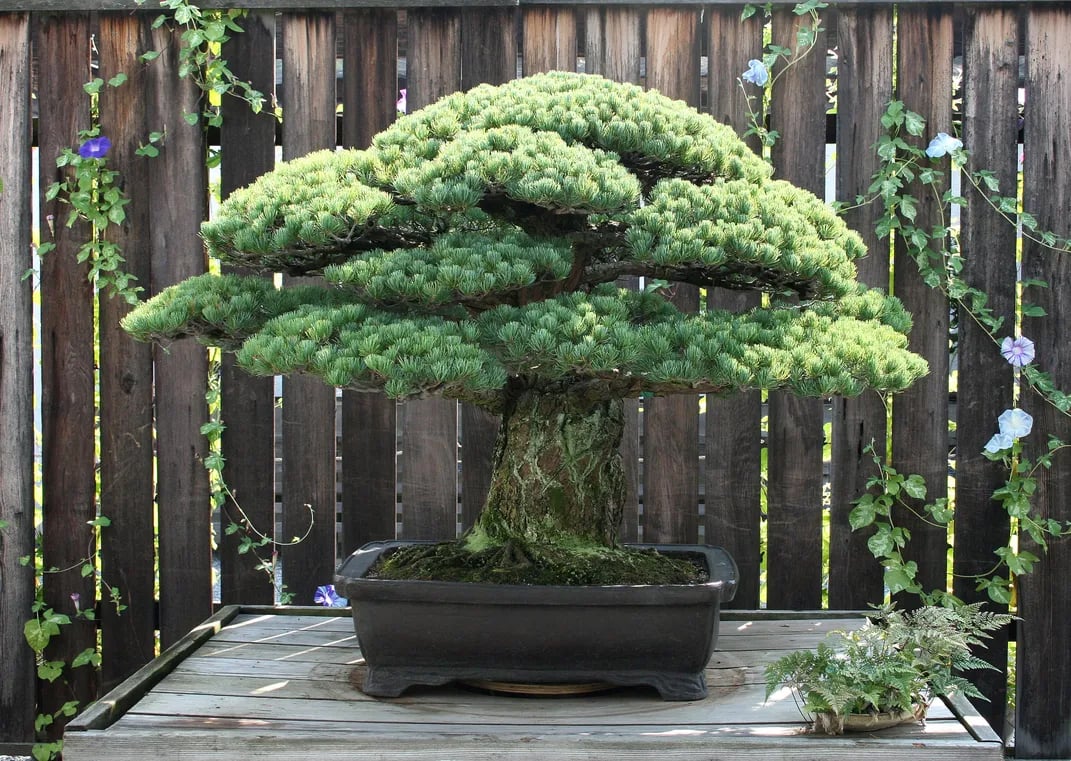It’s an early morning in late summer, and as commuters zip down Rock Creek Parkway—through its thick canopy of American beech, oak, and tulip poplar—one man is slowly circling a massive oak tree, whose thick trunk twists like a peppermint stick. The man at its base is Vincent Drader, who works for the DC urban forestry nonprofit Casey Trees.
Equipped with a measuring tape, Drader is here to help solve an arboreal mystery that has left the nonprofit, well, stumped: What is the biggest tree in DC?
The answer has been elusive—even for Casey Trees, which works to protect and restore DC’s tree canopy. Since its founding in 2001, the nonprofit has inventoried more than 21,000 trees citywide. But that isn’t close to every tree in the District, so Casey Trees decided to enlist the help of the public—both to answer the question and to spur interest in what they’re up to. This summer, the nonprofit sponsored a monthlong contest that found citizens branching out to wrap measuring tapes around various girthy trunks.

To be clear, there’s no pressing need to pinpoint the city’s largest tree. But the project seemed like a good way to get people to pay more attention to DC’s largest trees and their ability to cool neighborhoods and collect runoff water, among other benefits. “People tend to be more interested in animals than plants,” says Melanie Choukas-Bradley, a naturalist who has published a field guide to DC’s trees. “They might think of plants as a sort of green, boring background, so anything that helps people tune into the importance of trees is beneficial. The more they feel an emotional attachment to trees, the more likely they are to be good stewards.” Plus, she adds, “People love contests.”
Back in Rock Creek Park, Drader shows me how to do it, measuring up four-and-a-half feet from the ground, then wrapping the tape around the trunk. Normally, when determining a tree’s size, you’d need to account for height and crown spread too, explains Drader. But, for the sake of its citizen scientists, he says, they kept things simple and stuck with trunk width alone. The Rock Creek Park tree’s result: 20 feet, 10 inches. Impressive, for sure, but definitely not the city’s biggest.

Drader is working off of a list of potential contenders, so we quickly head to the next trunk, a white oak on the 2800 block of Northampton Street in Chevy Chase DC that was previously crowned the biggest when Casey Trees last held a similar search back in 2006. The tree’s imposing foliage absolutely dwarfs the houses around it; no wonder it’s been a fixture of the neighborhood for decades, with the Washington Post describing it as “a picture of leafy vitality” in 1998. Yet Drader quickly determines that this will not be the winner. It comes in at just 19 feet, one inch.
That said, the residential oak could still potentially lay claim to one of the largest trees on private land—which Casey Trees’ field manager, Nick Smalley, says is an extraordinary feat. “Think about all the people who would have had a say in the use of that property over 200 years,” says Smalley. “The fact that every single one of them valued that tree enough to not mess with it is really special.”
All the other trees we visited that morning were on protected park land, including a massive tulip poplar in Montrose Park, whose two main branches looked like the giant arms of a mythical creature. One passerby, Cleveland Park resident Yvonne Gray, says she regularly visits the tree and remarked that it looks like an “ent,” or one of the tree-like creatures, from The Lord of the Rings.
“Every time I come here, I go and look at that tree,” said Gray, who has nicknamed it “grandmother.” “There’s no question of not looking at that tree.”

But while grandmother certainly had character, it also wasn’t the largest. Its circumference clocked in at 19 feet, seven inches.
So which trunk would prove victorious? The results were announced August 7, with numerous giants having been measured by Casey Trees workers and the public. The tree king turned out to be a colossal chestnut oak in Battery Kemble Park. By Drader’s measurement, its multi-stem trunk boasted a circumference of 24 feet, 3 inches.
The fact that this tree came out on top wasn’t entirely surprising. About a decade ago, the chestnut oak was cataloged as a “champion tree” by the American Forests Association, meaning it was considered the largest recorded tree of its species in the U.S. At the time, its height was recorded at 105 feet.

As to how old the chestnut oak is? That’s unclear. But, according to one online theory, the tree was potentially cut down during the Civil War to allow unobstructed airspace for cannon fire from Battery Kemble Park, which served as a Union Army defensive site. And that after that, it re-sprouted from the cut stump.
Regardless of whether the Civil War theory is true, “imagining how long that thing has been there is just so impressive,” says Smalley. But he admits that the contest is hardly definitive, and he thinks there are probably larger specimens out there to be found.
Maybe Casey Trees could host this every year?
That sounds great to Smalley: “Personally, I can’t imagine a much better day than walking around the woods trying to find the biggest tree I can.”

















